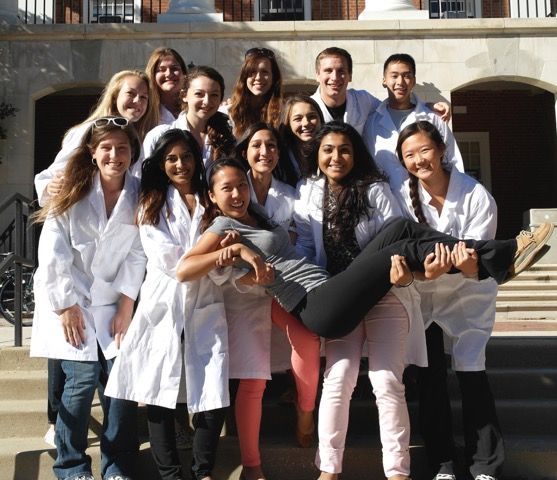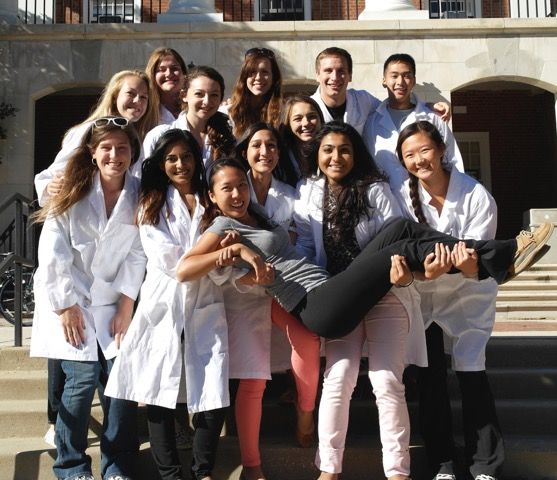A dozen students working on a Gemstone research project have overcome a personal tragedy as they continue researching a potential treatment for Alzheimer’s disease.
As of last fall, the student team, Team Brain Blast, had worked for two years under the guidance of Brian Bequette, an animal and avian sciences professor. Together they looked for an innovative way to treat Alzheimer’s — by injecting a certain drug into the nose through a syringe instead of administering it orally.
Bequette spent countless hours in the lab working on research, but on Sept. 16, he suddenly collapsed while doing a routine data collection with students and died later that day at Washington Adventist Hospital.
“That was a really rough couple weeks,” said Eric Kang, a junior biology major who was in the lab with Bequette when he collapsed. “It was really rough for us.”
That same day, word spread to the teammates and Gemstone faculty about the incident. When the team members heard the news, they gathered with Frank Coale, a university professor and Gemstone program director, in the Gemstone lab.
“It wasn’t long until we had the whole team there, just kind of supporting each other, so we ended up buying some food and sitting around, just chatting,” Coale said.
In the following days, the students were worried about whether they could continue the project without Bequette, said Ilana Green, a junior physiology and neurobiology and psychology major. But the students made it back to the lab to continue their research for the remaining year of the Gemstone thesis requirement, for which students spend four years researching, applying for grants and analyzing data with the help of a mentor.
“Their resiliency and how they handled it in a mature fashion was a big huge lesson learned,” Coale said. “It won’t show up on their resumes anywhere, but it’s a huge lesson and a huge experience they’ll never forget.”
The team asked Kara Duffy, a doctoral candidate who worked under Bequette, to become their new mentor. She accepted, despite just having started a new off-campus job in Shady Grove. Leslie Juengst, another graduate assistant to Bequette, also helped the team.
Though the Centers for Disease Control and Prevention lists Alzheimer’s as the sixth-leading cause of death in the U.S., no cure exists for it. Bequette worked with the students to study a diabetes drug, Thiazolidinedione, or TZD.
“When we were brainstorming, he was brainstorming too … so he was right with us figuring out what to do,” Green said.
They hypothesized that injecting the drug through the nose could allow it to bypass the “blood-brain barrier,” she said, sending it straight to the brain with less harmful side effects.
To help with funding, they raised more than $5,000 in three days through Launch UMD, a fundraising website for on-campus groups and events.
Now, the team continues to collect and test data about every day. The members use tiny syringes to drop bubbles of the TZD drug into the noses of genetically altered mice with Alzheimer’s.
They see their research not as a means to cure Alzheimer’s but to lay the building blocks for future research that might. Having their research inspire or be used by a professional lab is the ultimate goal, Kang said.
As they work toward that goal and their final thesis next year, he said, Bequette still inspires their project.
“His fingerprints are still all over our project,” Kang said. “They’re everywhere.”





